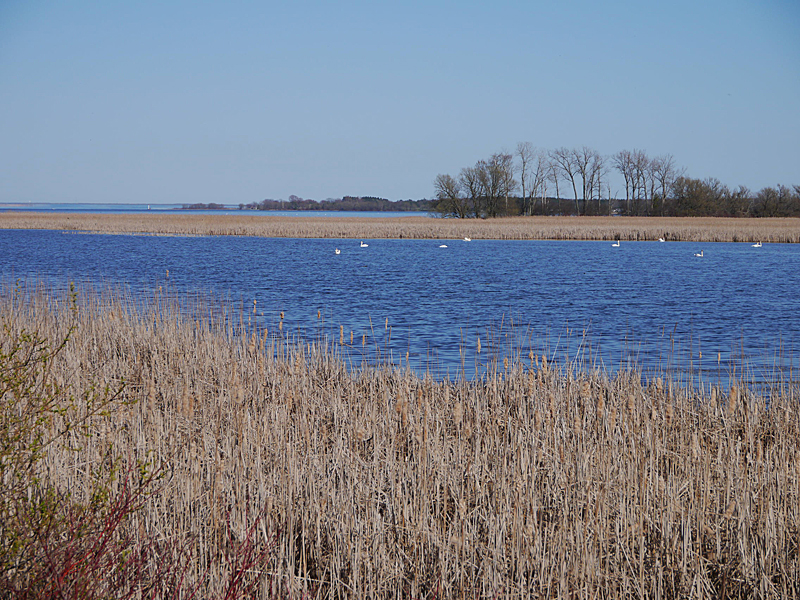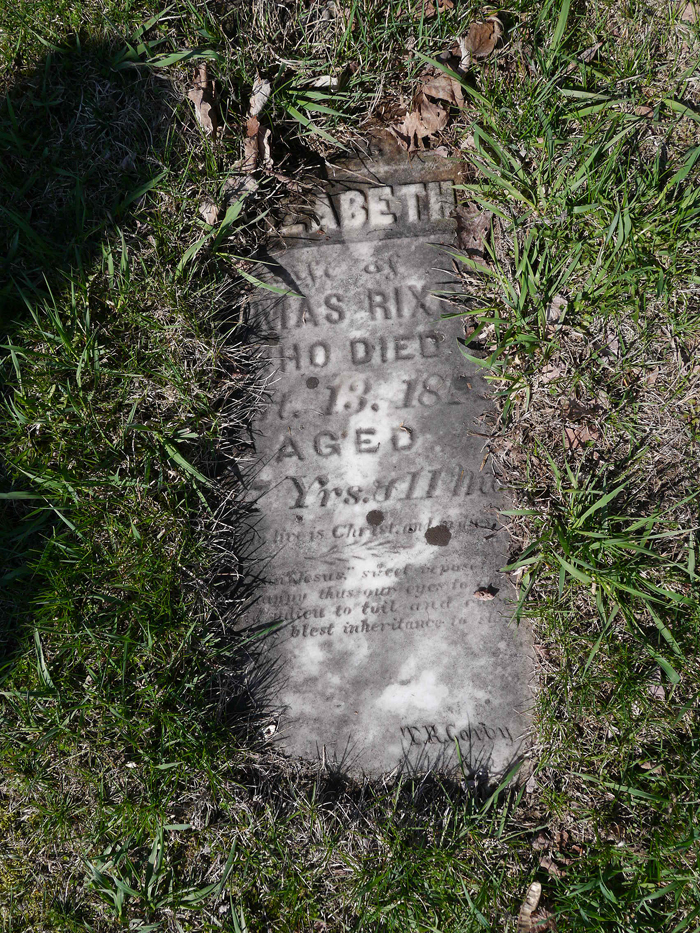Thomas Rixon (1793-1876) remained throughout his adult life “a very ‘dandified’ Englishman, always appearing in his top hat, spats, gloves and cane and, although quite poor, always a ‘gentleman’.”1 This description, written by my grandmother about her grandfather, suggests that Thomas Rixon was something of a character. Given that he lived in a rural area near Lake Ontario’s Bay of Quinte and supported his family as a farmer and a carpenter, that top hat must have stood out. If I had only had the usual census and church records to go by, I would have come to the conclusion that my three-times great-grandfather was a pretty ordinary guy, but the top hat was a good clue: Thomas has proved to be somewhat mysterious.

The first time I looked for Thomas Rixon in the census on Ancestry.ca, I even had difficulty finding him because his name was misspelled two different ways (Rison and Rickson). But gradually, I have put together an overview of his life, with added details from a recently discovered article, written in 1984 by Fennell family historian Brian Harling.
Thomas was born in 1793 in Woolwich, Kent, England, a naval shipbuilding and military town on the Thames River near London. He was the son of William and Martha Rixon, one of eight children, four of whom lived to adulthood.2 He probably trained as a shipwright before immigrating to Canada.
Thomas may have traveled to Canada with his brother James (1796-1870). James settled in Milton, Halton County, southwest of Toronto, where he became a farmer and, with his wife Mary Davidson, raised six children. According to Harling, the earliest record of Thomas Rixon’s presence in Canada was in April 1820 in a list, published in the Kingston Gazette, of people who had mail waiting at the post office.3
Thomas Rixon, shipwright, married Elizabeth (Betsey)Thompson (1804-1872) in October 1825 at the Anglican Church, Ameliasburgh Parish.4 Betsey’s family had come to Canada from Goshen, New York a few years before her birth and settled on Big Island, Sophiasburgh Township, Prince Edward County.5 According to an 1832 survey of Big Island, Thomas Rixon was on Lot 24 and Betsey’s brothers Hiram Thompson and William Maurice Thompson were nearby on lots 25 and 18.6 Big Island belonged to the Mohawk people of Tyendinaga at the time, so the Thompsons, the Rixons and many of their neighbours were squatters. Why Thomas, who had grown up a city boy, ended up settling so far off the beaten track, and how he took to farming, is not known.
Most of the Rixon children were born in Sophiasburgh, and Harling found Thomas’ name in the Road Reports for Sophiasburgh Township between 1838 and 1846. Every year, all residents of rural municipalities were required to provide several days of labour, primarily road building and maintenance. By the time the census was taken in 1851, the Rixon family had moved to Cramahe Township in neighbouring Northumberland County. Thomas and his family were counted there in the 1851, 1861 and 1871 censuses.
I am not sure whether Thomas and Betsey ever purchased their own farm, or whether they continued to rent. In the 1851 census, Thomas was listed on Concession 6, Lot 27, Cramahe. Harling noted that he was on Concession 8, Lot 12 in the 1850 census of Cramahe Township, and that he purchased a four-acre property – Concession 8, Lot 13 — in 1852 and sold it in 1855. The 1861 census listed the family in a one-storey frame house.
It is clear Thomas did not get rich with farming or with carpentry, and he and Betsey had many mouths to feed. Fortunately, no one had much cash and farmers were usually self-sufficient. They grew their own food and they grew flax they wove into linen cloth. They sent their cow hides to the local tannery and some farmers even made their own boots and harnesses..7
The Rixons had eleven children, and, towards the ends of their lives, they raised two of their grandchildren, Samantha Rixon and Phineas Rixon. There is a family story that Thomas and Betsey had a twelfth child, Arthur Wellington Rixon. I have searched for him online, and I hired two local researchers to look for him, to no avail. I strongly suspect he never existed, and will write about this in a future post.
Thomas and Betsey’s other children were well documented:
- William James Rixon b. 1826, m. Mary Jane Cardinell; Methodist preacher, died 1918, California
- Henry James Rixon b. 1828, d. 1830
- Catherine E. Rixon, b. 1829, m. Homer Platt, d. 1922, Brighton
- Rhoda H. Rixon, b. 1832, m. Jonathan Rolfe, d. 1907, Osceola, Michigan
- Martha Jane Rixon, b. 1834, m. Moses Smith Perkins, d. Montague, Michigan, 1875
- Ormacinda E. Rixon, b. 1836, m. Henry Ryan Fennell, d. 1913
- Kezia Matilda Rixon, b. 1838, m. Charles Warner, d. 1910, Cramahe
- Phoebe Ann Rixon, b. 1841, m. Marshall Dulmage, d. 1885, Brighton
- Mary Lucy Rixon, b. 1843, m. Aaron Warner, d. 1924
- James P. Rixon, b. 1845, d. 1848
- Sarah L. Rixon, b. 1847, m. Amos Knapp, d. after 1920, Michigan

Elizabeth Rixon died on Sept. 13, 1872 at age 67, and was buried in Hilton United Church Cemetery, near Brighton. After her death, Thomas must have moved in with his daughter Kezia Warner because, at the time of his death on Dec. 12, 1876, his place of residence was at the Warner home, Concession 6, Lot 27, Cramahe. Thomas died at age 82 and is also buried in Hilton Cemetery.
Although Elizabeth’s gravestone is lying on the ground, it is still visible. Harling reported seeing Thomas’s gravestone next to it, broken and almost illegible, in 1984. Thirty years later, Thomas is still remembered.
Photo Credits: Janice Hamilton
Notes
- Note on the back of a photograph of Samantha Rixon, signed at the bottom with initials LMF. LMF was my grandmother, Lillian May (Forrester) Hamilton. She probably wrote the note in the 1940s or early 1950s since she mentioned her granddaughters. My cousin Alison Hermon emailed me an image of the note about eight years ago. Not realizing that there were errors, I forwarded a transcript to a genealogist working on the Fennell family, and it is now posted in the Public Member Trees section of Ancestry. My grandmother wrote correctly that Thomas was from Kent, but she added that he went to the U.S. before coming to Canada. He may have gone there with his brother for a time. She stated his family was of Huguenot descent, which is possible since there were many Huguenots in southeast England, however, I have no evidence to prove it. Lillian also stated Thomas was a member of the United Empire Loyalist Party. Although it seems clear he loved England, he is not on any list of Loyalists, and several of his children ended up moving to the United States.
- Janice Hamilton, “The Rixon Family of Woolwich, Kent,” Writing Up the Ancestors, Jan. 24, 2017, https://www.writinguptheancestors.ca/2017/01/the-rixon-family-of-woolwich-kent.html
- “Fennells & Smiths, 19th Century Northumberland County, Ontario, Canada. A genealogical newsletter. Quarterly/ vol. 3 no 1/November 1984,” p. 2.
Professional genealogist Gabrielle Blaschuk found this article, written by Brian Harling, in the public library in Brighton, Ontario. She commented, “This is a priceless find, as I have confirmed that a number of records they have listed have, in the interim, disappeared and no one knows their whereabouts.” - Ibid. p. 2
- Janice Hamilton, “A Confirmed Connection: the Thompson family of Goshen, N.Y. and Sophiasburgh, Ontario,” Writing Up the Ancestors, Nov. 4, 2015, https://www.writinguptheancestors.ca/2015/11/a-confirmed-connection-thompson-family.html
- C. Loral R. Wanamaker, “John Thompson to Upper Canada circa 1800. Settled first Sophiasburgh twp. Later family Lot #72 – 3 Concession in Township of Ameliasburgh, Prince Edward County, Ontario,” (manuscript); hand-drawn map, p. E1, 1981; private collection of Elmire L. Conklin.
- C. Sprague, “Early History of Big Island,” (manuscript), Quinte Branch, OGS, 1960.
